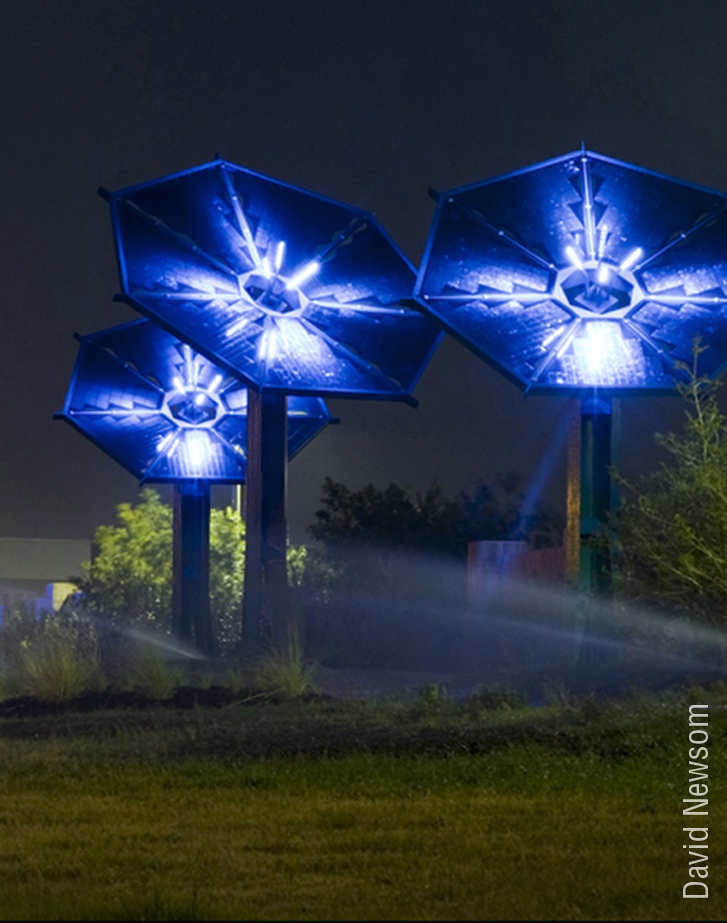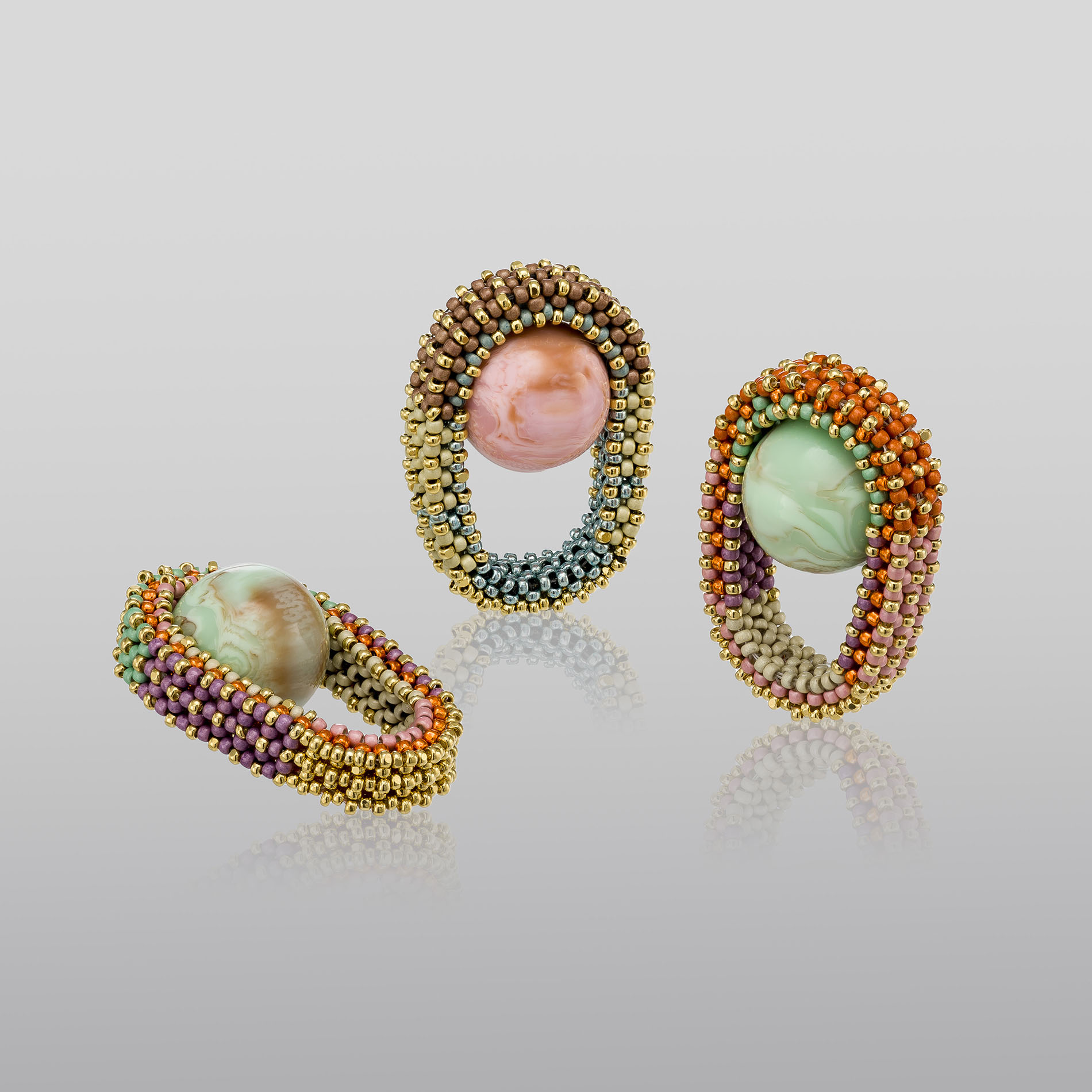In the 16th & 17th centuries, nobles, scholars and scientists maintained “cabinets of curiosity” or “wonder rooms,” collections of awe-inspiring natural objects. Over time, these cabinets became the forerunners of modern museum collections.
Verity Pulford, curator of Uncommon Beauty: Objects of Curiosity and Wonder, crafted a contemporary cabinet of curiosity, inviting 26 artists to create an intriguing narrative of a natural object. Working with materials and form, the artists collectively produced a treasure trove of exquisite works beckoning us to slow down, look closely and allow the wonders of nature to take their rightful place in our lives.
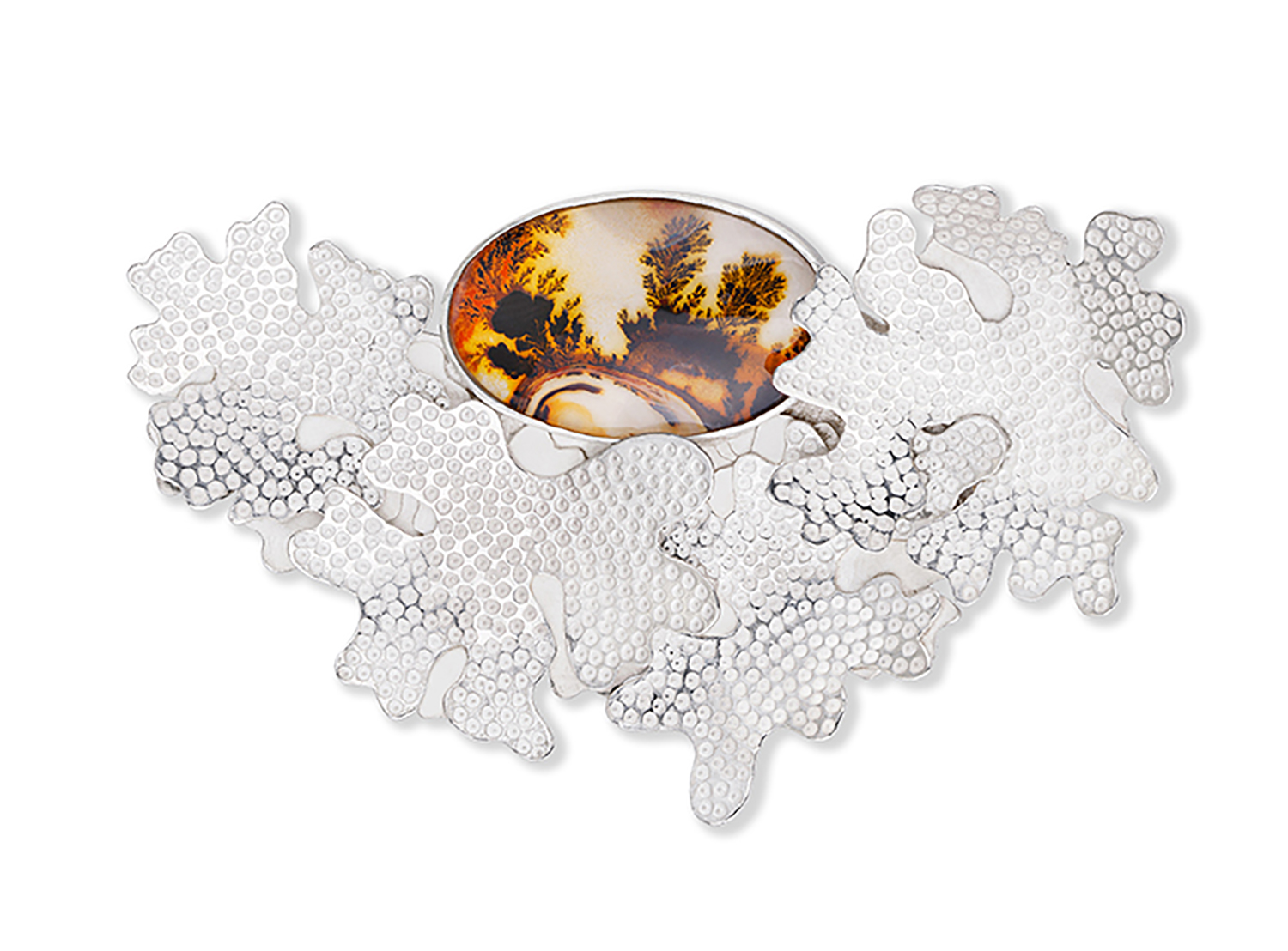
Kate Bajic, Evernia dendrite brooch, 2023. Sterling silver, dendritic agate. ©Kate Bajic 2023. Courtesy of the Makers Guild in Wales.
Kate Bajic creates handcrafted jewelry inspired by the intricate forms of lichens – those complex life forms that consist of a partnership between a fungus and an alga.
Initially drawn to lichens’ visual form and striking color, Bajic became intrigued by their chemical structure and functional value. Today, lichens are used in dyes, cosmetics, deodorant, and space and medical research. And because lichens absorb pollutants, scientists employ them to detect the presence of heavy metal, sulfur or other pollutants in the atmosphere. In a nod to lichens’ scientific value, Bajic now adds elements of chemical structure to her designs. Since there are over 1,800 species of lichens in her home country, the UK (and approximately 3,600 in North America), lichens provide endless inspiration for Bajic.
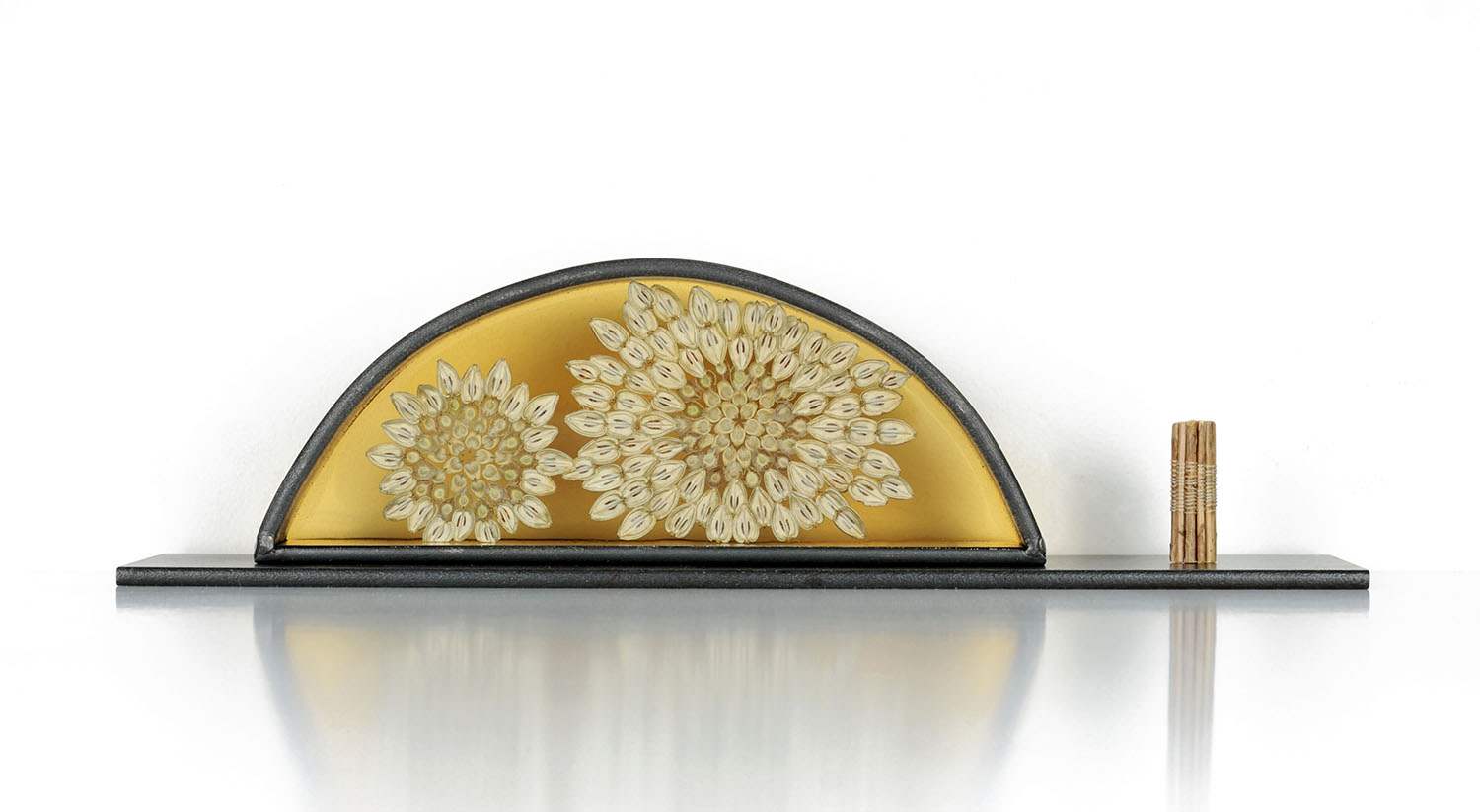
Andrea Haffner, Dome Sculpture, 2023. Found natural objects encased in resin. ©Andrea Haffner 2023. Courtesy of the Makers Guild in Wales.
Andrea Haffner incorporates small found materials – weathered lacy pod skeletons, driftwood and dissected seeds – in tiny, resin-encased compositions. Each item “carries a story of its own existence, as well as a piece of my own.” Since light is a primary consideration in her work, the medium of resin allows her to work with transparent dyes in her pieces, “creating a glow from within.”
The small containers “can serve as both holders of precious things and deliberate points of focus.” She explains that “the containers I create, whether in photographic, sculptural or jewelry form, can be their own small worlds, holding a caught moment, a meditation, or a subtle gesture.” Her art invites us to “observe and appreciate the abundant natural forms that grow all around us and might otherwise be overlooked.”
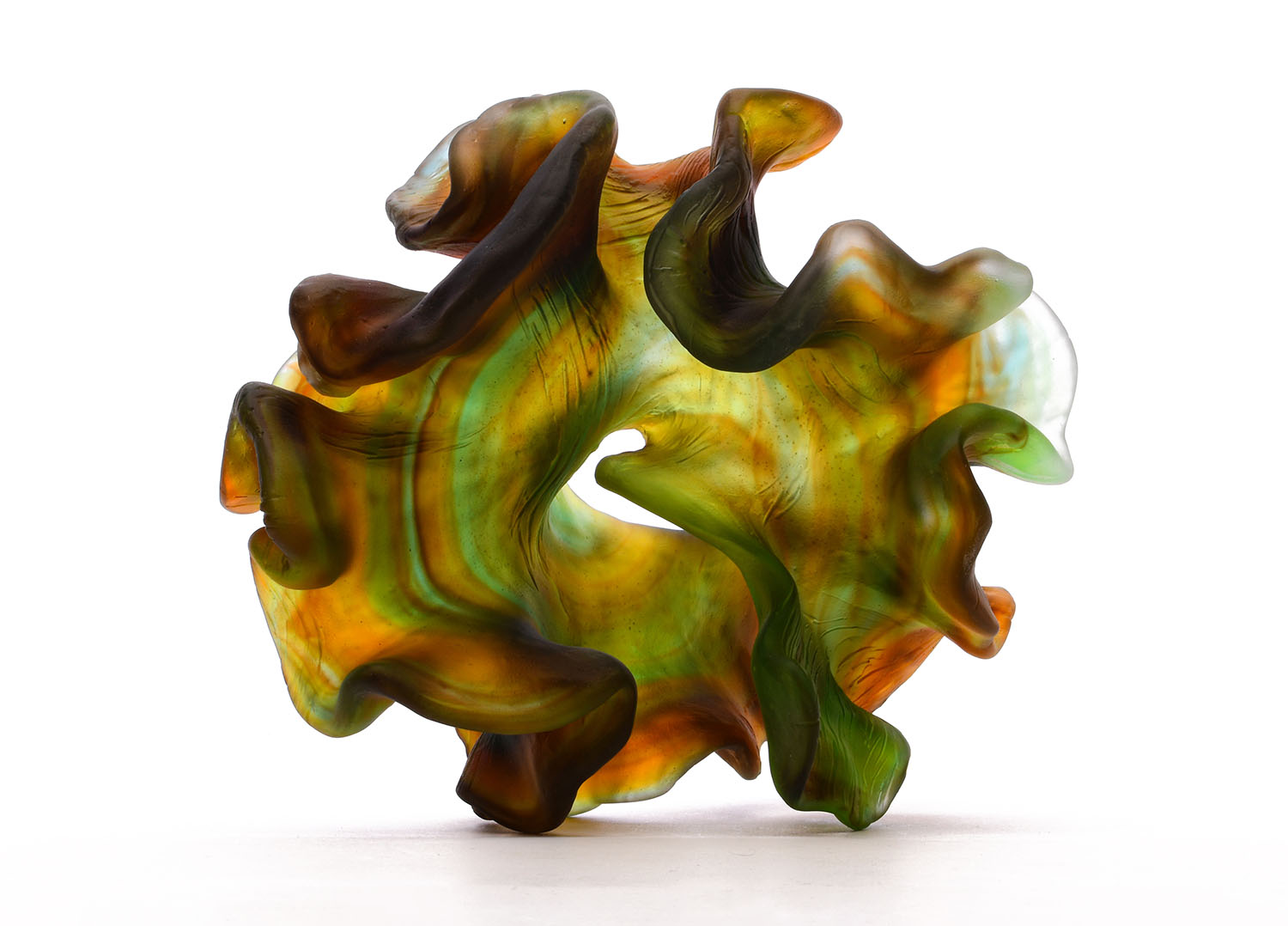
Monette Larsen, Tumbling Seashape, 2023. Crocheted hyperbolic plane, wax, glass. ©Monette Larsen 2023. Courtesy of the Makers Guild in Wales. Photo: Valerie Bernardini.
Monette Larsen studies the underlying structures and patterns that give rise to beauty in nature.
Her current work “is influenced by the underlying structures of corals, their shape, growth and movement in the sea.” She explores the mathematics of the coral shape, known as a hyperbolic plane (that is, a surface which is the geometric opposite of a sphere because the space curves away from itself at every point).
The first useable physical model of a hyperbolic plane was made using crochet. Replicating that process, Larsen starts by creating a crocheted hyperbolic plane. She transforms the crocheted surface into a wax shape, then carves and casts the piece in glass. Her “Tumbling Seashape” series shows the ways in which this process can produce vastly different visual results from the same repeated plane. Larsen likens her creative process to the forces of nature, which alter organisms in the natural world.
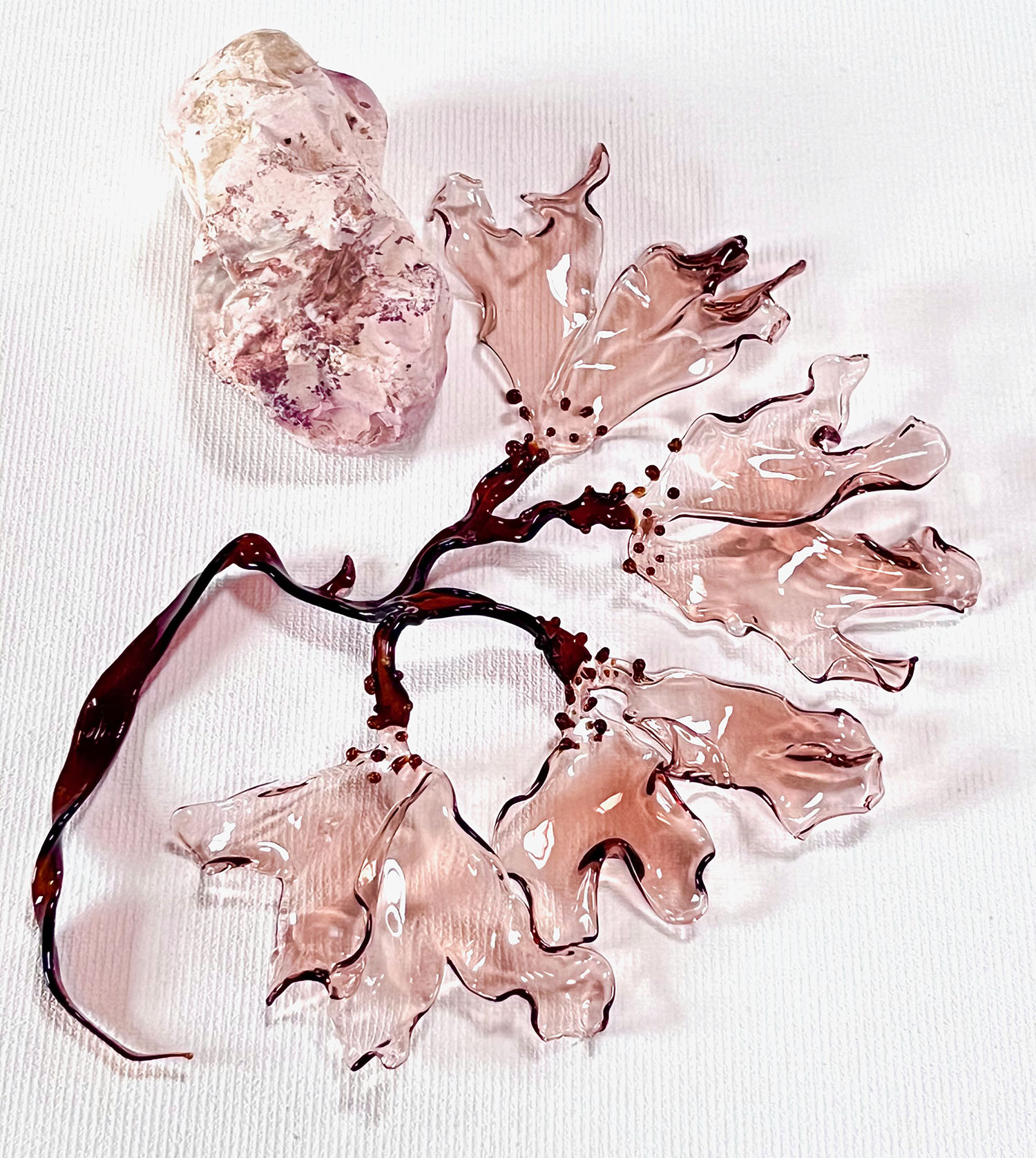
Andrea Spencer, Irish Moss, 2023. Found natural objects, glass. ©Andrea Spencer 2023. Courtesy of the Makers Guild in Wales.
Andrea Spencer, a resident of the scenic Northern Irish coast, is inspired by the places where land and water meet. Here, in a landscape of constant change, she finds beauty in the fragile and complex structures of natural forms such as Irish moss. Through glassmaking, she translates these forms into abstract or symbolic objects that serve as a metaphor for aspects of human nature: “I’m always striving to capture an essence of truth through the qualities inherent in the … glass. Fluidity, transparency, fragility and light all work together to define the character and ephemeral nature of my work.”
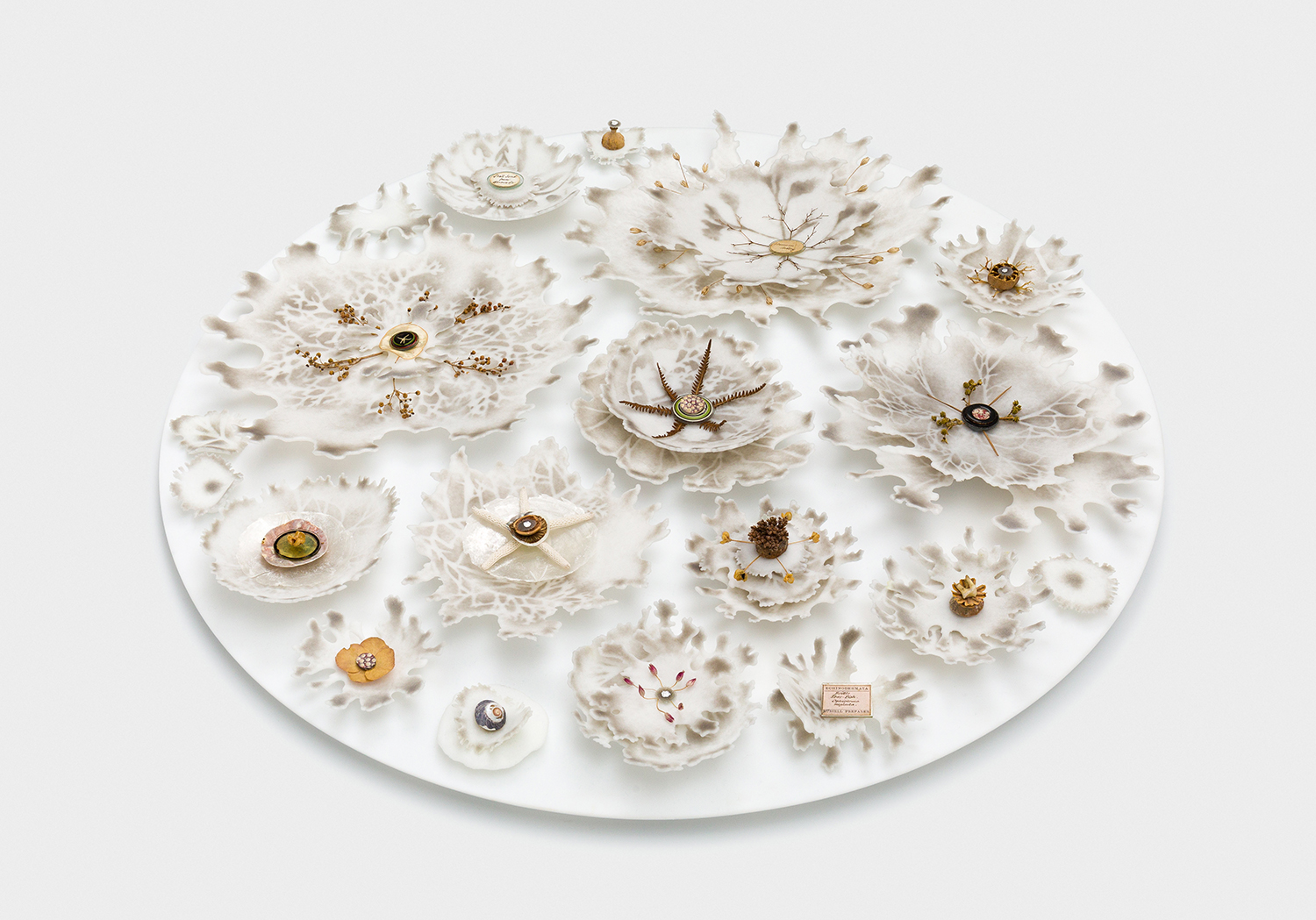
Verity Pulford, For the Love of Small Things, 2023. Found natural objects and glass. ©Verity Pulford 2023. Courtesy of the Makers Guild in Wales. Photo: Stephen Heaton.
Verity Pulford draws inspiration from natural organisms—algae, lichen, moss, grasses, ferns and fungi – in rural North Wales. She is fascinated by the complexity of these seemingly simple organisms and their interplay in nature – how layer upon layer of complexity creates “a universal oneness, the feeling that we are all the same thing – a system, in communion, a beautiful symphony.”
Combining found natural objects with a variety of glassmaking techniques (cast, pate de verre, kiln-formed, painted and etched surfaces), she creates her own plant forms or organisms to share “this blissful, expansive and calm space” she accesses in nature through the medium of glass.
Pulford is also intrigued by how humans catalogue nature – e.g., in natural history collections or botanical drawings – an interest that manifests itself in the orderly arrangement of natural objects in “For the Love of Small Things.”
The Craft in the Bay gallery in Cardiff, Wales hosted the Uncommon Beauty: Objects of Curiosity and Wonder exhibition from April 1 through May 29, 2023. The exhibition catalogue is now online. Check out the catalogue to see the intriguing visual narratives created by all 26 artists featured in the exhibition: https://www.makersguildinwales.org.uk/uploads/9/1/6/1/91617428/uncommon_beauty_english.pdf

